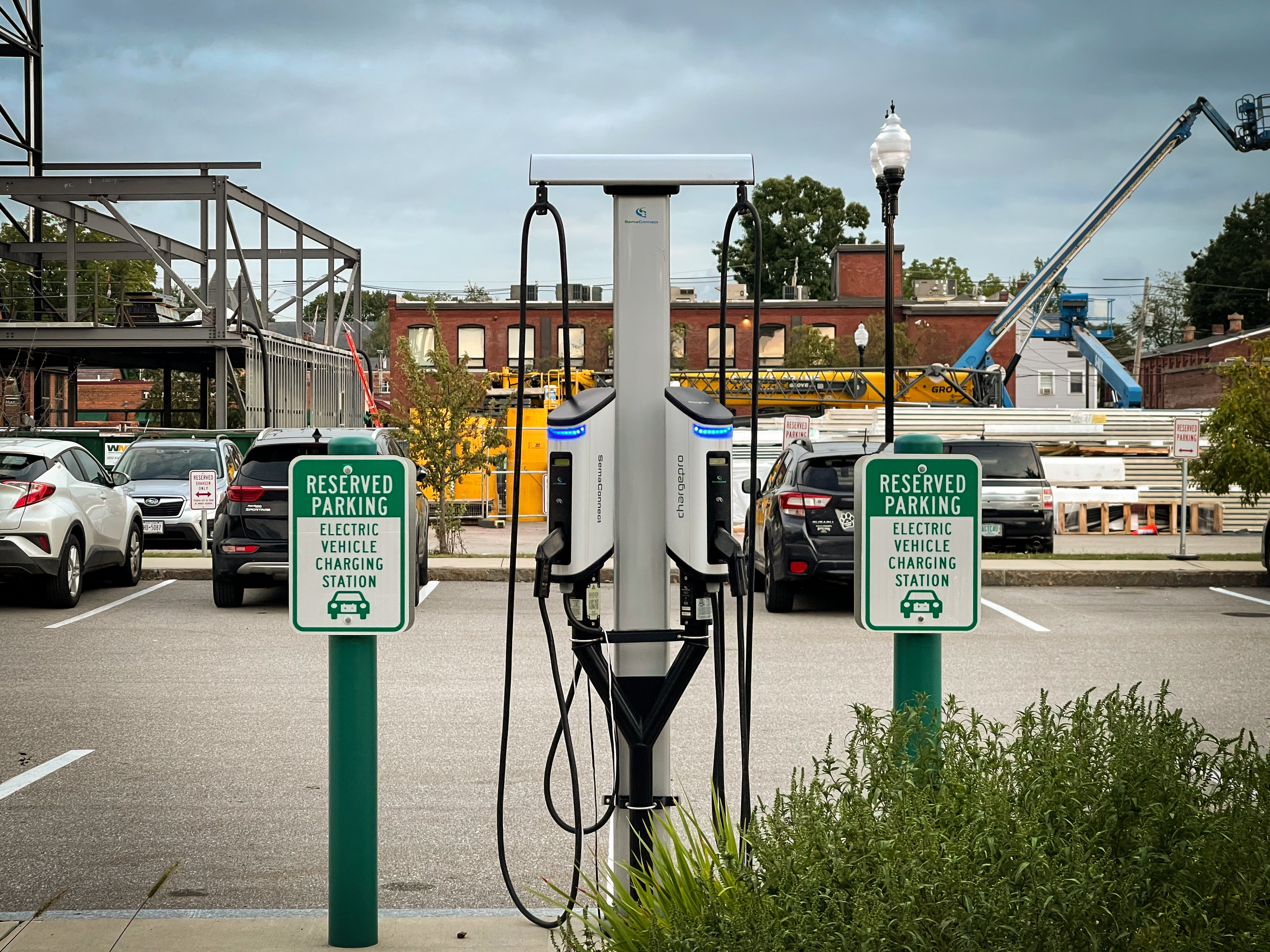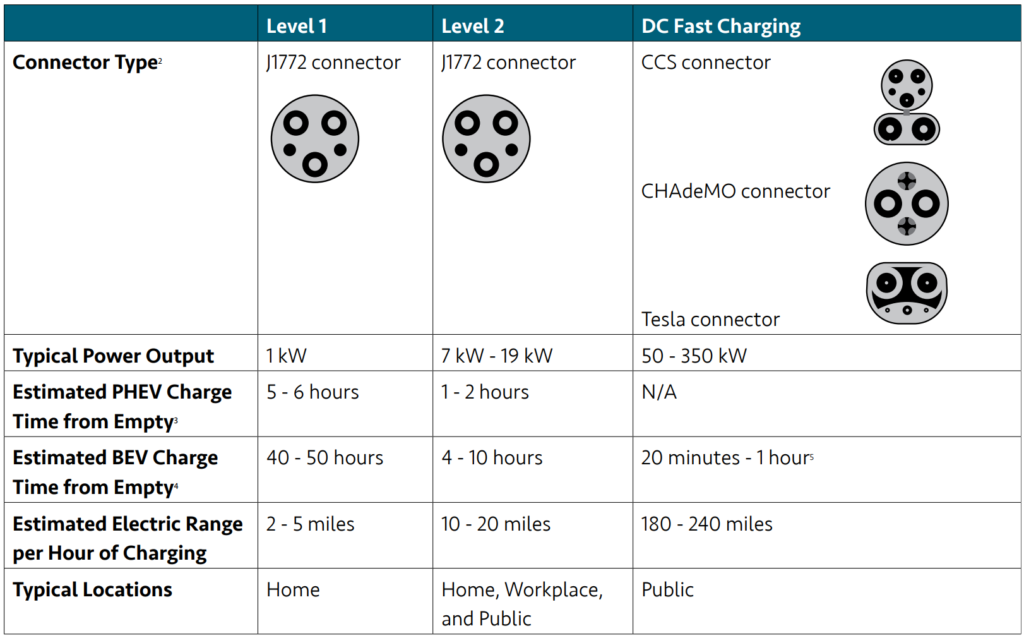
“Charging Forward”: Preparing Your Community for Electric Vehicles
- March 2, 2022
- Transportation
By Jennifer Nelson
The transportation sector accounts for 42% of greenhouse gas (GHG) emissions in New Hampshire. And, with the nation’s rural areas making up only 20% of the population but 70% of the nation’s road miles, rural residents pay the price—in terms of both gas and vehicle maintenance—for longer trips. Electric vehicles (EVs), including battery electric vehicles (BEVs) and plug-in hybrid electric vehicles (PHEVs), present an opportunity for local communities to reduce environmental impacts and save costs.
This energy transition will get a significant boost through the recently passed federal Infrastructure Investment and Jobs Act, now commonly referred to as the Bipartisan Infrastructure Law, which designates $7.5 billion for 500,000 EV charging stations nationwide. $5 billion of this money will be distributed to states including $17.3 million coming to New Hampshire, and the remaining $2.5 billion will be awarded to communities through a competitive grant program. Given this unprecedented funding opportunity, it is crucial for New Hampshire and it’s municipalities to start planning for EVs and required charging infrastructure (also called electric vehicle supply equipment, or EVSE).
The U.S. Department of Transportation’s “Charging Forward” toolkit offers timely guidance for rural communities interested in welcoming EV technology. Described as a “one-stop resource to help rural communities scope, plan, and fund EV charging infrastructure,” the guide identifies planning approaches, key partners, and funding sources that will be vital for southwest New Hampshire’s EVSE development.
Here are some highlights from the guide and three basic principles to keep in mind when planning for EVSE.
Prepare residents for expansion of EVs and charging infrastructure.
Initially, EV models had short battery ranges, making urban centers the more practical environment for these vehicles. As a result, public exposure to EV technology has typically been lower in rural communities. Meaningful and targeted outreach of the benefits of EVs (i.e. informing of health benefits through clean air and reduced greenhouse gas GHG emissions or household savings through reduced fuel and maintenance costs) and pronounced visibility of EVs in public areas can help residents shift away from traditional gas-powered vehicles. Outreach strategies can be varied in scope and scale, ranging from public education workshops to ride-and-drive events.
Choose the right charging equipment for your community.
EVs can be charged at three speeds, depending on equipment and voltage. Level 1 equipment uses the standard residential 120V outlet and charges vehicles slowly, taking up to 50 hours to fully charge a BEV from empty or 6 hours to fully charge a PHEV from empty. Level 2 equipment uses a 240V outlet and charges at a medium speed, taking 4-10 hours to charge a BEV and 1-2 hours to charge a PHEV. Direct current fast charging (DCFC) equipment is most commonly used along roadways and can charge a BEV to 80 percent in less than 1 hour (most PHEVs do not yet work with DCFC equipment). For the best public charging experience, communities should plan to add Level 2 and DCFC equipment in heavily-trafficked areas.

Support local businesses with strategic charging placement.
With the proper equipment decided, the next step is to choose an appropriate charging location. The U.S. Department of Transportation recommends looking at potential infrastructure locations at three levels: corridor, community, and site. Understanding infrastructural challenges and opportunities at multiple scales can help municipalities address the diverse needs of their residents and visitors. For example, charging stations can be strategically located to encourage tourists to spend time at local restaurants, retail shops, or attractions. Conversely, sparsely distributed public charging stations can prevent EV-owning tourists from visiting these sites.
Check out the toolkit for more in-depth information about the topics described above and more. You can also learn more about how to begin EVSE implementation in your community by visiting Monadnock Sustainability Hub’s EV Charging Infrastructure webpage or contacting SWPRC’s Todd Horner.
Interested in learning how to facilitate the installation of charging infrastructure in your community? Take our short survey to help us better understand what types of assistance and resources would be most useful.



